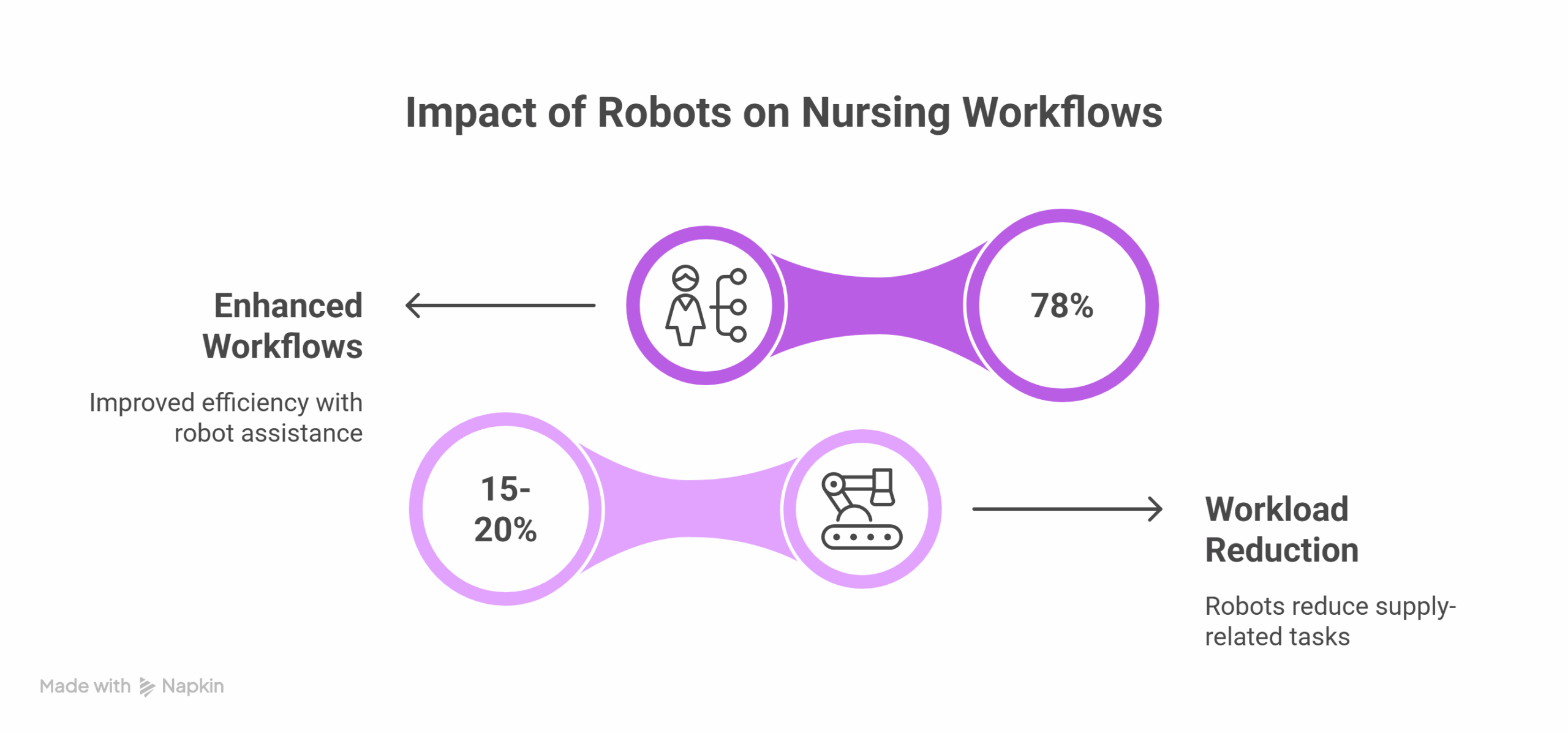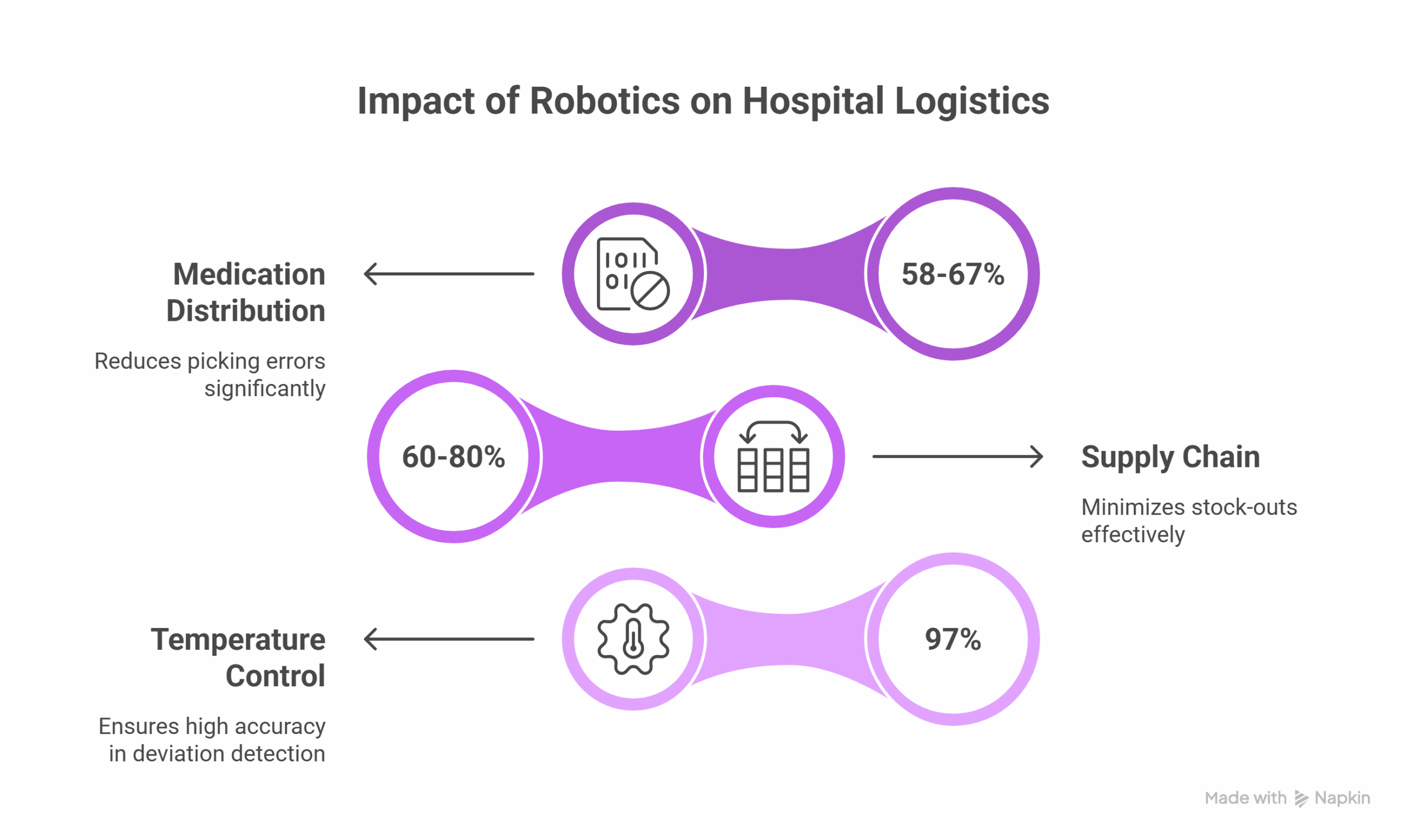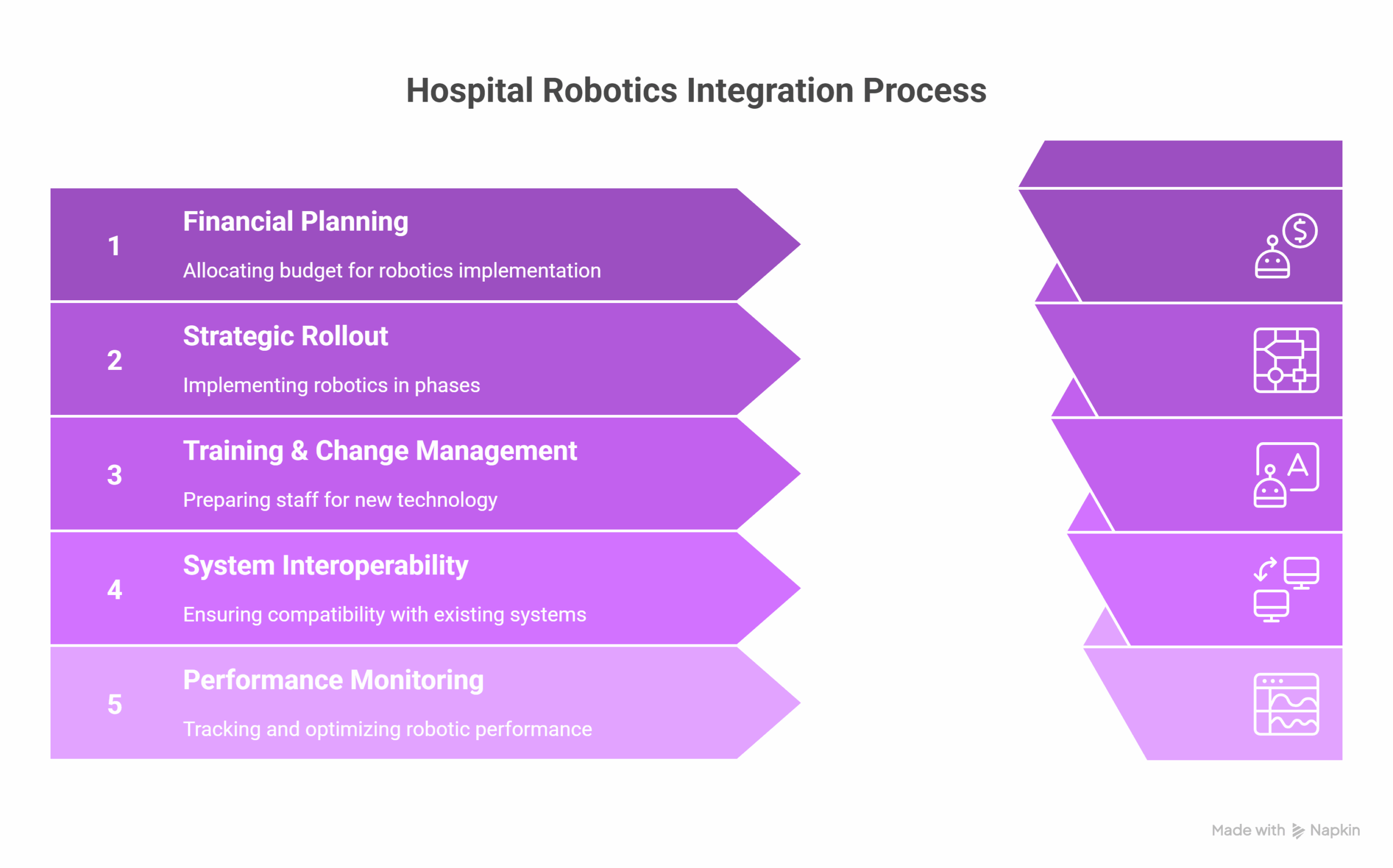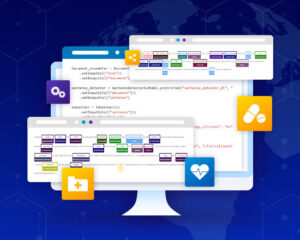What is driving the adoption of robotics in hospital logistics?
Hospitals are rapidly deploying robotics to alleviate staffing shortages and improve operational efficiency. With a market valued between $1.5 and $3.9 billion in 2024 and projections reaching up to $18.4 billion by 2033, robotics in healthcare logistics is not only scalable but also essential for modern hospitals. Leading market analysts affirm that these solutions are being rapidly adopted to ease operational gaps caused by labor shortages and to enhance efficiency, safety, and reliability in hospital operations. Robots are now integral for automating logistical tasks, from supply and medication delivery to streamlining inventory, reinforcing their essential role in the evolving healthcare landscape.

How do hospital robots reduce staff burden?
Robotic systems take over time-consuming logistics tasks such as supply delivery and inventory transport, enabling staff to focus on patient care. Research shows that 78% of nurses report improved workflows, with robots reducing their supply-related workload by 15–20%.
What measurable ROI do hospital robots deliver?
Hospitals deploying robotics report first-year cost reductions between 15% and 22%, with order fulfillment rates increasing by 20-30%. Each TUG robot replaces 3-4 full-time equivalents and delivers $180,000 to $300,000 in annual savings.
What are the top robotic solutions transforming hospital logistics?
Key solutions include Autonomous Mobile Robots (AMRs) that deliver medications and supplies with 96-98% on-time rates. Advanced robots support specialized tasks like:
- Medication distribution: 58-67% fewer picking errors
- Supply chain: 60-80% fewer stock-outs
- Temperature control: 97% accuracy in detecting deviations
How is AI enhancing robotic logistics systems?
AI technologies integrated into hospital robotics drive intelligent task management and predictive analytics:
- RFID and IoT: Enable 95-99% inventory accuracy and reduce cold chain failures by 80%
- AI navigation: Avoids obstacles and optimizes routes
- Predictive analytics: Improve forecasting by 37.6% (World Economic Forum).
How does John Snow Labs support healthcare robotics?
John Snow Labs supports healthcare robotics by offering artificial intelligence technologies with the potential to enhance logistical operations by allowing the integration of clinical information living in electronic health records and other unstructured language content with robotic workflows. Its portfolio includes more than 2,000 pre-trained models for healthcare natural language processing, enabling hospitals to understand and act on clinical text data with high accuracy. Additionally, the company provides medical language models that assist with clinical reasoning and automate documentation tasks. These tools are built on a secure, HIPAA-compliant platform, ensuring data privacy and compliance with regulatory standards.
What should healthcare systems consider before implementing robotics?
Successful robotic integration requires:
-
- Financial planning: Initial costs range from $500,000 to $5 million
- Strategic rollout: Phased deployment starting with supply and pharmacy
- Training & change management: To ensure user adoption
- System interoperability: Must work with EHRs and existing IT
- Performance monitoring: Track metrics and optimize in real-time
What future trends are shaping hospital logistics automation?
Hospitals are entering a new era of intelligent automation, driven by:
- Multi-modal systems: Combining robotics, AI, and IoT for 28-37% better efficiency
- Edge computing: Cuts critical response times by up to 75%
- Collaborative robotics: Boosts efficiency by 35-48% through human-machine teamwork
- Global expansion: Asia-Pacific markets showing significant growth
Conclusion: Why robotics and AI are essential for sustainable healthcare
Robotics and AI in hospital logistics directly address workforce shortages while improving patient outcomes and operational efficiency. With ROI in under two years and widespread staff satisfaction, these systems are transitioning from optional to essential. John Snow Labs’ AI technologies complement these robotics, creating an integrated ecosystem for next-generation healthcare delivery.
FAQs
What types of tasks do hospital logistics robots perform?
Robots handle supply delivery, medication transport, meal services, lab sample transfers, and waste disposal, freeing staff for patient care.
Can robotics help reduce nurse burnout?
Yes. Robots reduce physically demanding and repetitive tasks, improving workflow and allowing more time for direct patient care.
Are robotic systems secure and compliant?
Yes. When integrated with solutions like John Snow Labs’ HIPAA-compliant AI, robotic systems maintain high standards for data security.
What technologies power hospital robotics?
Core technologies include AI navigation, RFID, IoT connectivity, predictive analytics, and real-time EHR integration.
Supplementary Q&A
How quickly can hospitals realize ROI from robotics?
Most institutions achieve return on investment within 15 to 24 months due to labor cost reductions and operational improvements.
What makes John Snow Labs’ AI unique in this space?
Its 2,000+ pre-trained NLP models and HIPAA-grade platform provide state-of-the-art accuracy, making it ideal for healthcare logistics integration.
Where are hospital robotics seeing fastest growth?
Asia-Pacific and the Middle East show accelerating adoption due to infrastructure investments and demand for healthcare modernization.


































